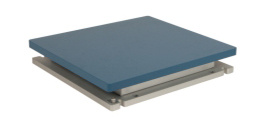Linking basic research, clinical research and treatment practice
The movement analysis laboratory of the Orthopaedic Clinic, Friedrichsheim has existed since 2010. Medical Director and Managing Director is Univ.-Prof. Dr. med. Andrea Meurer.
Research topics from the field of clinical movement analysis and simulation are the focus here. Patients with different orthopaedic and neuro-orthopaedic clinical pictures are examined and treated.
The tasks of the team in the movement analysis laboratory include clarification of pain and conspicuous gait patterns, optimisation of treatment and targeted planning of surgical interventions, objective progress monitoring of therapy concepts and surgical effects, as well as research in the field of clinical movement analysis. Preventive stress analyses and sports analyses to optimise movement sequences are also carried out.




